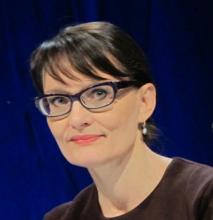BOSTON – The appearance of mature burn scars significantly improved after treatment with a nonablative fractional laser, based on data from a randomized controlled trial.
In a split-lesion study, laser-treated skin appeared smoother than did adjacent untreated control sites, and within 3 months both patients and clinicians rated laser-treated areas as significantly improved, said Dr. Merete Haedersdal of the University of Copenhagen, Denmark.
"We consider this as a safe treatment, we now have long-term clinical and histological efficacy, and we do have documentation that the efficacy improves over time. We are operating with an intact skin barrier, which may give us a good potential for when we are going to treat patients with large areas of burn scars," she said at the annual meeting of the American Society for Laser Medicine and Surgery.
Dr. Haedersdal and her colleagues in Denmark, Germany, and Belgium examined long-term outcomes from the treatment of burn scars using a 1,540-nm fractional nonablative laser with compression handpieces to deliver energy to deep and superficial tissues.
Twenty patients (median age, 38 years) were enrolled, and 17 completed the study. The patients, all Fitzpatrick skin types II or III, had mature burn scars from fires (75%) or scalding (25%), and 75% had previously received skin grafts. The mature scars, with a median duration of 7 years, involved the trunk and/or extremities.
Side-by-side areas of each lesion were randomly assigned to receive three monthly deep and superficial treatments with Palomar Medical Technologies’ 1,540-nm nonablative fractional laser or to serve as untreated controls.
With the deep (XD) handpiece, the energy was applied with 15-ms pulses at 70 mJ per microbeam in three stacks for 10 passes. The compression tip of the handpiece squeezes moisture away from the applicator end, allowing delivery of energy into deep tissues.
The superficial (XF) handpiece was then used to deliver 50 mJ per microbeam in a 15-ms pulse for one stack with two passes.
"By ultrasound, we saw that we were able to deliver the energy into the deep layers of the skin," Dr. Haedersdal said. She cited the example of one patient whose scar was 1.08 mm thick before treatment, and immediately after treatment it was 3.52 mm thick from edema in the mid and deep dermal layers.
On-site clinical evaluations at 6 months performed by blinded observers rated 15 of 18 treated areas as improved, 3 as showing no response, and none as worsening. In contrast, all 18 control sites were rated as having no response.
The investigators also used the Patient and Observer Scar Assessment Scale (POSAS), which rates vascularity, pigmentation, thickness, relief, pliability, and surface area, as well as overall impression. The scale ranges from 1 for "normal skin" to 10 for "worst scar imaginable." The baseline median score was 7 (range, 3-8) for both groups.
At 1 month after treatment, there was no significant difference in POSAS score between the treated and untreated sides of the scars, but by 3 months the untreated sides were rated as a median of 7, compared with 5 for the treated sides (P = .0185). At 6 months the difference had increased slightly, with a median rating of 7 for the untreated sides and 4 for the treated sides (P = .0008).
The researchers also observed significant improvements in laser-treated (but not control) scars from baseline to 3 months (P = .0185), baseline to 6 months (P = .0008), and from 3 to 6 months (P = .0092), "which actually supports for the first time that when giving these nonablative fractional treatments, there is a continued improvement over time," Dr. Haedersdal said.
The researchers found that meshed (transplanted) skin tended to respond better than nontransplanted skin. Preliminary histology showed treatment-induced remodeling of the stratum corneum, frequently with a thicker epidermal compartment. In addition, post-treatment collagen deposition appeared closer to that found in normal skin, Dr. Haedersdal noted.
The immediate post-treatment responses included edema in 17 of 20 patients, erythema in 18, and purpura in 15, but there was no blistering of skin, and the skin barrier remained intact.
During the study period, 6 of 20 patients had hyperpigmentation, which resolved gradually over time.
"We also saw a grid pattern in three of the patients using these parameters, but we softened up the treatments afterward by giving following treatments with the XF handpiece," Dr. Haedersdal said.
The study was supported by an equipment loan and research grant to Dr. Haedersdal from Palomar Medical Technologies.

